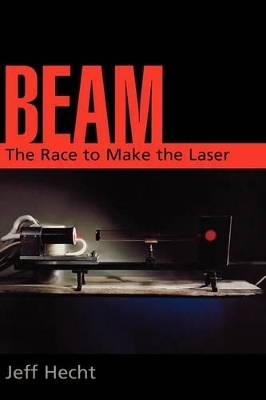
Beam
Oxford University Press Inc (Verlag)
978-0-19-514210-5 (ISBN)
In 1954, Charles Townes invented the laser's microwave cousin, the maser. The next logical step was to extend the same physical principles to the shorter wavelengths of light, but the idea did not catch fire until October 1957, when Townes asked Gordon Gould about Gould's research on using light to excite thallium atoms. Each took the idea and ran with it. The independent-minded Gould sought the fortune of an independent inventor; the professorial Townes sought
the fame of scientific recognition. Townes enlisted the help of his brother-in-law, Arthur Schawlow, and got Bell Labs into the race. Gould turned his ideas into a patent application and a
million-dollar defense contract. They soon had company. Ali Javan, one of Townes's former students, began pulling 90-hour weeks at Bell Labs with colleague Bill Bennett. And far away in California a bright young physicist named Ted Maiman became a very dark horse in the race. While Schawlow proclaimed that ruby could never make a laser, Maiman slowly convinced himself it would. As others struggled with recalcitrant equipment and military secrecy, Maiman built a tiny and elegant device that fit
in the palm of his hand. His ruby laser worked the first time he tried it, on May 16, 1960, but afterwards he had to battle for acceptance as the man who made the first laser. Beam is a fascinating
tale of a remarkable and powerful invention that has become a symbol of modern technology.
Jeff Hecht met his first laser as a Caltech undergraduate in 1968, and took a while to figure out what it was good for. In his case, it was a lot of words--he's been writing about lasers and optics for the past thirty years. His books include City of Light: The Story of Fiber Optics (OUP, 1999), Understanding Lasers (1994), Understanding Fiber Optics (2002), Laser: Light of a Million Uses (1998), Optics: Light for a New Age (1988), and The Laser Guidebook (1991). He is a correspondent for the weekly international magazine New Scientist.
Prologue: May 16, 1960, Malibu, California
1: The Laser Race
2: Microwaves Are the First Step
3: Leaping a Few Orders of Magnitude: The Optical Maser
4: The Outsider's Invention: The Laser
5: Bell Labs Takes the Early Lead
6: Stimulating the Emission of Money
7: A Spreading Interest in the Laser Idea
8: A Pause to Compare Notes
9: A Dark Horse Joins the Race
10: "Everybody knew it was going to happen within months"-Bell Labs Feels Safely in the Lead
11: A Crash Program at "Pipsqueak Inc."
12: The Siren Call of the Laser
13: The Critical Question of Efficiency
14: An Idea Simpler in Theory Than in Practice
15: Triumph in the Palace of Science
16: An Unexpected Struggle for Acceptance
17: "We were astounded"-A Stunned Reaction
18: Runners-Up Cross the Finish Line
19: Epilogue
| Erscheint lt. Verlag | 14.4.2005 |
|---|---|
| Zusatzinfo | numerous halftones and line drawings |
| Verlagsort | New York |
| Sprache | englisch |
| Maße | 236 x 160 mm |
| Gewicht | 536 g |
| Themenwelt | Sachbuch/Ratgeber ► Natur / Technik |
| Naturwissenschaften ► Physik / Astronomie ► Atom- / Kern- / Molekularphysik | |
| Naturwissenschaften ► Physik / Astronomie ► Optik | |
| Technik | |
| ISBN-10 | 0-19-514210-1 / 0195142101 |
| ISBN-13 | 978-0-19-514210-5 / 9780195142105 |
| Zustand | Neuware |
| Haben Sie eine Frage zum Produkt? |
aus dem Bereich


